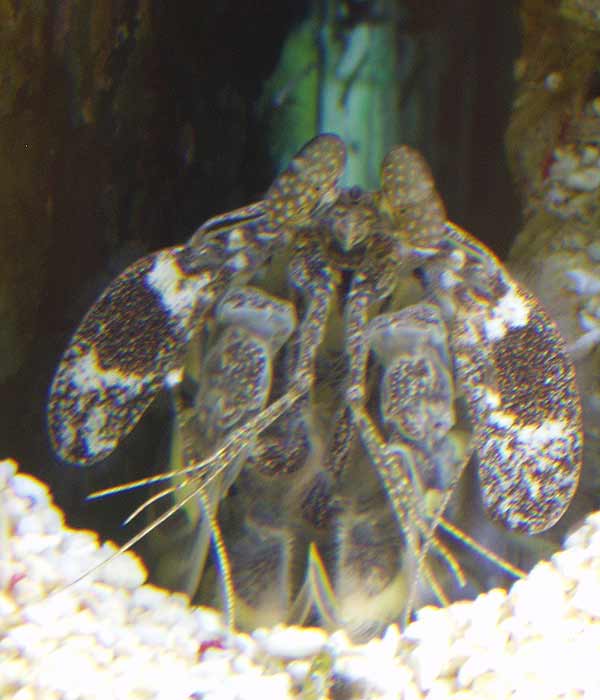|
Squillidae
Squillidae is a family of mantis shrimp, the only family in the superfamily Squilloidea. The type genus is '' Squilla''. It is the stomatopod family with the most genera, as follows: *''Alima'' Leach, 1817 *'' Alimopsis'' Manning, 1977 *'' Alimopsoides'' Moosa, 1991 *'' Anchisquilla'' Manning, 1968 *'' Anchisquilloides'' Manning, 1977 *'' Anchisquillopsis'' Moosa, 1986 *'' Areosquilla'' Manning, 1976 *'' Belosquilla'' Ahyong, 2001 *'' Busquilla'' Manning, 1978 *'' Carinosquilla'' Manning, 1968 *'' Clorida'' Eydoux & Souleyet, 1842 *'' Cloridina'' Manning, 1995 *'' Cloridopsis'' Manning, 1968 *'' Crenatosquilla'' Manning, 1984 *'' Dictyosquilla'' Manning, 1968 *'' Distosquilla'' Manning, 1977 *'' Erugosquilla'' Manning, 1995 *'' Fallosquilla'' Manning, 1995 *'' Fennerosquilla'' Manning & Camp, 1983 *'' Gibbesia'' Manning & Heard, 1997 *'' Harpiosquilla'' Holthuis, 1964 *'' Humesosquilla'' Manning & Camp, 2001 *'' Kaisquilla'' Ahyong, 2002 *'' Kempella'' Low & Ahyong, 2010 *'' L ... [...More Info...] [...Related Items...] OR: [Wikipedia] [Google] [Baidu] |
Squilla Mantis
''Squilla mantis'' is a species of mantis shrimp found in shallow coastal areas of the Mediterranean Sea and the Eastern Atlantic Ocean: it is also known as "pacchero" or "canocchia". Its abundance has led to it being the only commercially fished mantis shrimp in the Mediterranean. Description Individuals grow up to long, and is of the ''spearer'' type. It is generally dull brown in colouration, but has two brown eye spots, circled in white, at the base of the telson. Other species – including ''smashers'' – are also sold in the aquarium trade as ''Squilla mantis''. Distribution and ecology ''S. mantis'' digs burrows in muddy and sandy bottoms near the coasts of the Mediterranean Sea and adjacent warm parts of the eastern Atlantic Ocean. It remains in its burrow during the day and comes out at night to hunt, and in the winter to mate. It is found around the entire coast of the Mediterranean, and in the Atlantic Ocean south from the Gulf of Cádiz to Angola, as well as ar ... [...More Info...] [...Related Items...] OR: [Wikipedia] [Google] [Baidu] |
Mantis Shrimp
Mantis shrimp, or stomatopods, are carnivorous marine crustaceans of the order Stomatopoda (). Stomatopods branched off from other members of the class Malacostraca around 340 million years ago. Mantis shrimp typically grow to around in length, while a few can reach up to . A mantis shrimp's carapace (the hard, thick shell that covers crustaceans and some other species) covers only the rear part of the head and the first four segments of the thorax. Varieties range in colour from shades of brown to vivid colours, with more than 450 species of mantis shrimp known. They are among the most important predators in many shallow, tropical and subtropical marine habitats. However, despite being common, they are poorly understood, as many species spend most of their lives sheltering in burrows and holes. Called "sea locusts" by ancient Assyrians, "prawn killers" in Australia, and now sometimes referred to as "thumb splitters"—because of the animal's ability to inflict painful woun ... [...More Info...] [...Related Items...] OR: [Wikipedia] [Google] [Baidu] |
Stomatopod
Mantis shrimp, or stomatopods, are carnivorous marine crustaceans of the order Stomatopoda (). Stomatopods branched off from other members of the class Malacostraca around 340 million years ago. Mantis shrimp typically grow to around in length, while a few can reach up to . A mantis shrimp's carapace (the hard, thick shell that covers crustaceans and some other species) covers only the rear part of the head and the first four segments of the thorax. Varieties range in colour from shades of brown to vivid colours, with more than 450 species of mantis shrimp known. They are among the most important predators in many shallow, tropical and subtropical marine habitats. However, despite being common, they are poorly understood, as many species spend most of their lives sheltering in burrows and holes. Called "sea locusts" by ancient Assyrians, "prawn killers" in Australia, and now sometimes referred to as "thumb splitters"—because of the animal's ability to inflict painful wou ... [...More Info...] [...Related Items...] OR: [Wikipedia] [Google] [Baidu] |
Erugosquilla
''Erugosquilla'' is a genus of crustaceans belonging to the family Squillidae Squillidae is a family of mantis shrimp, the only family in the superfamily Squilloidea. The type genus is '' Squilla''. It is the stomatopod family with the most genera, as follows: *''Alima'' Leach, 1817 *'' Alimopsis'' Manning, 1977 *'' A .... The genus was first described in 1995 by Raymond Brendan Manning. The type species is '' Erugosquilla massavensis'' . Species Species accepted by WoRMS: *'' Erugosquilla grahami'' *'' Erugosquilla hesperia'' *'' Erugosquilla massavensis'' *'' Erugosquilla septemdentata'' *'' Erugosquilla serenei'' *'' Erugosquilla woodmasoni'' References {{Taxonbar, from=Q18592372 Stomatopoda Malacostraca genera Taxa named by Raymond B. Manning ... [...More Info...] [...Related Items...] OR: [Wikipedia] [Google] [Baidu] |
Clorida
''Clorida'' is a genus of shrimps belonging to the family Squillidae Squillidae is a family of mantis shrimp, the only family in the superfamily Squilloidea. The type genus is '' Squilla''. It is the stomatopod family with the most genera, as follows: *''Alima'' Leach, 1817 *'' Alimopsis'' Manning, 1977 *'' A .... The species of this genus are found in Northern America, Southeastern Asia, Southern Africa and Australia. Species: * '' Clorida albolitura'' Ahyong & Naiyanetr, 2000 * '' Clorida bombayensis'' (Chhapgar & Sane, 1967) * '' Clorida daviei'' Ahyong, 2001 * '' Clorida decorata'' Wood-Mason, 1875 * '' Clorida denticauda'' (Chhapgar & Sane, 1967) * '' Clorida depressa'' (Miers, 1880) * '' Clorida gaillardi'' Moosa, 1986 * '' Clorida granti'' (Stephenson, 1953) * '' Clorida japonica'' Manning, 1978 * '' Clorida javanica'' Moosa, 1974 * '' Clorida latreillei'' Eydoux & Souleyet, 1842 * '' Clorida obtusa'' Ahyong, 2001 * '' Clorida rotundicauda'' (Miers, 1880) * '' Clor ... [...More Info...] [...Related Items...] OR: [Wikipedia] [Google] [Baidu] |


